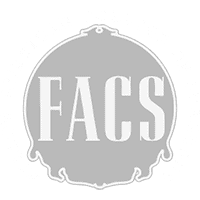Facelift
Newport Beach
The Way to Achieving
Stunningly Younger-Looking Skin






As you age, you experience changes in the skin, fats, muscles, and bones of your face, contributing to your overall facial appearance.
Your skin loses collagen, thinning your skin’s middle layer, called the dermis. It also reduces your skin’s ability to retain elasticity and moisture, resulting in thinner, drier, and less supple skin. It’s the reason why you develop wrinkled and sagging skin as well.

Fat loss also happens, leading to a loss of facial volume. You’ll notice that your forehead and cheeks lose fat, while your mouth and jaw might gain fat. The redistribution of fat pads can change your facial contours, resulting in heavy jowls and sagginess.
Even your facial bones can lose volume, affecting the overlying tissues and skin. You’ll notice that your bony landmarks are more visible, leading to the development of wrinkles and fine lines. In addition, your nasolabial folds become more prominent, while your cheeks become hollow. You’ll also develop thinner lips and wrinkles around your mouth.
The good news is that you can turn back the hands of time and restore your youthful appearance with the help of a Newport Beach facelift expertly done by Dr. Siamak Agha and Dr. Ali Razfar of The Aesthetic Centers.
Learn more about how the classic facelift can erase the signs of aging on your face and neck, improve your appearance, and reclaim your youth as you read the rest of this article.
What is a Facelift?
Medically known as rhytidectomy, a facelift reverses the effects of time on your face and neck, making you look like a younger version of yourself.
As you age, two things happen to your face – your skin loses elasticity, and your tissues lose volume. These result in deep wrinkles, jowls on your lower face, and loose skin on the neck.
With a facelift, your surgeon will remove excess skin, smoothen deep folds, and lift and tighten your sagging facial tissues.
A facelift is an excellent solution if you’re bothered by these natural signs of aging and want to restore your youthful, vibrant appearance. It will also correct skin laxity in your neck area that occurs due to massive weight loss.
In fact, the facelift is one of the most popular cosmetic surgeries among adults aged 55 and above in 2018, second only to an eyelid lift.
Do You Need a Facelift?
To evaluate your need for a facelift, try to answer the following with a yes or a no:
- Do you feel self-conscious about the sagging skin on your face and neck due to aging or weight loss?
- Do you often wear scarves and turtlenecks just to hide your “turkey neck”?
- Do you feel that your face looks much older when you look into the mirror?
- Does your aging appearance negatively affect your career or personal relationships?
- Are you bothered by the early signs of aging that are taking hold of your face?
- Are you feeling self-conscious and less confident because of the signs of aging on your face?
If you answered YES to any of these questions, then you might be in dire need of a facelift. This popular surgery will not only make you look healthier and younger but also give you a surge of self-confidence.
… But Can You Get a Facelift?
Unfortunately, not everyone who wants a facelift can get one. Some things you need to consider include:
Talking to Dr. Agha and Dr. Razfar regarding your expectations, medical history, and skin condition to guide you into making the right decision about getting a facelift.
Here are the most common facelift types:
There are multiple breast lift techniques, but the following are the most common ones that plastic surgeons use.

How Do Dr. Agha and Dr. Razfar Perform a Facelift?
The technique used depends on various factors, such as the patient’s anatomical features, goals, and extent of the procedure.
Often, a facelift is performed with another procedure, such as eyelid surgery or forehead lift.
Preparation
Before your facelift, you will be given specific instructions on what to do to make sure that you do not develop any complications. You might also be asked to buy a few supplies to prepare for your recovery.
Anesthesia
Though typically performed using general anesthesia, a facelift may also be completed under local anesthesia with sedation if the procedure isn’t that extensive.
For most patients, we prefer general anesthesia since the patient is far more comfortable when asleep.
Liposuction
The procedure is started by infusing tumescent fluid under the skin. This fluid will numb the face and reduce blood loss.
If the patient has a double chin and excessive fat, liposuction of the neck will be performed to remove fat from this region.
Incision
The sign of a remarkable facelift is not only a beautifully rejuvenated face and neck but also a scar that is perfectly placed in a well-hidden crease in front and behind the ear.
The incision is started at the temples within the sideburn hair and continues to the crease in front of the ear, around the ear cartilage, in the crease around the lobule, and ending in the crease behind the ear.
For those patients who have a lot of neck skin – such as in the case of patients who have lost lots of weight – the incision is extended behind the ear further along the hairline so that more neck skin can be excised.
Finally, another one-inch incision is made below the chin to access the neck muscles and elevate the neck skin.
Tissue Elevation
Through the incisions made in front and behind the ear, a portion of facial and neck skin is meticulously elevated from the underlying connective tissues and muscles.
The neck skin is extensively lifted completely as far as the midline from each side. He also raises the neck skin behind and below the ear. Through the incisions made in front and behind the ear, a portion of facial and neck skin is meticulously elevated from the underlying connective tissues and muscles.
The neck skin is extensively lifted completely as far as the midline from each side. He also raises the neck skin behind and below the ear.
Facial Tightening
In a SMAS facelift, the SMAS can be manipulated in a variety of ways.
Depending on the patient’s facial shape, we may lift and suture the SMAS, cut and repair the SMAS, or just infold and tighten the SMAS to create a smooth and lifted layer. A personalized series of suturing is used to tighten and lift the SMAS tissues of the neck and face.
In a deep plane facelift, the SMAS and platysma are released from the underlying facial muscles, repositioned, and secured in a posterior and vertical direction.
After lifting the SMAS, excess skin is excised, and incisions are closed.
In some cases, fat transfer to the cheeks may also be performed in conjunction with a facelift. It is recommended for patients who lost a significant amount of volume in the cheeks due to aging and/or weight loss.
Post-Surgery
You may expect to have a small, thin tube temporarily placed under the skin behind your ear for blood and fluid drainage.
Your skin is closed with stitches that will need to be removed 5-7 days after surgery.
How Do You Recover from a Facelift?
Even though a Newport Beach facelift is a complicated procedure, the good news is you’ll have a fast recovery process.
Typically, patients can go home on the same day of their surgery, as long as they have a family member or friend to care for them.
You will receive oral medications to ease the discomfort you’re feeling, which may subsist for a few days. Expect also to have some bruising and swelling within 7-10 days.
What Results Can You Expect from a Facelift?
After getting a facelift, you can expect:
- Reduced facial lines and wrinkles
- Firm and smoother skin on the face and neck
- Tighter facial contour
- A more youthful appearance
- Higher self-esteem and sense of self-worth
A 2017 study revealed that patients who underwent facial rejuvenation surgeries like the facelift are perceived as younger and more attractive by casual observers compared to their photos before the surgery.
Because of this, facelift patients generally feel more attractive, adding to their confidence and sense of overall well-being.
How Much Does a Newport Beach Facelift Cost?
After a thorough consultation, your surgeon will make a customized treatment plan that is right for you. Several factors will influence the total cost, including the technique used, length of anesthesia, and any additional treatments needed.
Because a facelift is considered an elective procedure, it is not covered by your insurance. However, our office provides various financing options to help you manage the cost of surgery.
Get Your Facelift Done in Newport Beach, Orange County
Whether you lost a large amount of weight or you just want to arrest the signs of aging on your face, a facelift will do wonders in restoring your youthful appearance.
But to pull off such a detailed procedure, you would need exceptionally skilled plastic surgeons like Dr. Agha and Dr. Razfar to produce a natural youthful glow without overtightening your face.






